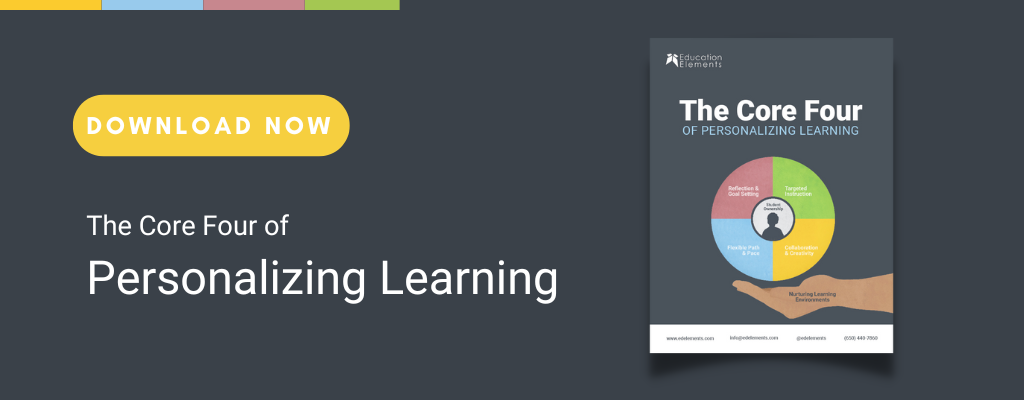
The Importance of Science of Reading for Our Students and Their Futures
District Leadership | School Leadership
Getting Off The Bench
If you are anything like me, you know that the “Science of Reading” is a lightning rod in the world of education right now, but feel more comfortable sitting on the sidelines and letting the experts engage. I decided it was time to jump into the conversation and wanted to share a few things that I learned along the way. As it turns out, I have a strong opinion on the matter, given my experience as an elementary and middle school educator and my dedication to building more equitable learning environments for all students. I now understand from my research and exploratory conversations that the Science of Reading promotes stronger reading and literacy skills. It also plays a central role in developing positive student identities when school districts support the implementation of DEI and SEL curricular tools. The magic potion for cultivating the most positive impacts for students includes the implementation of explicit phonetic instruction together with a culturally responsive curriculum. This language-rich and holistic learning environment sets students up to fully engage with academic material and grow to reach their full potential.
Two Sides of the Coin - Reading Recovery and the Science of Reading
To properly define the Science of Reading, it’s important to define what it is not. In the great debate over the topic, the contraposition is referred to as Reading Recovery, a reading instructional framework designed in New Zealand by Marie Clay in the 1970’s. In its most distilled version, it trained students to use cueing strategies to encourage them to focus on the overall meaning of a text rather than specific words and details. Cueing strategies include referencing visuals to understand a story, looking at the first letter of a word and guessing what it is based on context, and offering 1-1 support from teachers to practice these skills on a daily basis. This model excludes phonics instruction during literacy blocks. It is not supported by any scientific findings, and studies have shown that “these strategies are teaching children the habits of struggling readers. Kids learn to skip letters and words and struggle to understand what they’re reading.” Students can make gains with Reading Recovery strategies up until about the 2nd grade level. Beyond that, they become ill-equipped to continue advancing reading skills and typically do not stay on track with grade level standards. A number of studies over the past 30 years illuminate that supporting students with explicit skills in decoding words is integral to developing fluent readers and engaged students, but several factors brought Reading Recovery to the forefront of the US education system and maintained it as a dominant framework for decades.
The conversation finally began to shift during the pandemic when parents experienced literacy instruction at home firsthand and saw gaps in both instruction and their child’s understanding. In response, the Science of Reading movement used scientific studies and proven results to push explicit phonics, phonemics, and vocabulary instruction back into classrooms to support students in the fundamentals of sounding out words and building comprehension. Scarborough's Rope is one framework that outlines the variety of necessary elements and components that go into developing readers who can both comprehend and problem-solve through challenging texts. Outfitting students with the skills to become fluent readers who can engage with complex texts is not just necessary for academic success. Literacy promotes civic engagement, leads to professional and economic opportunities, and supports students in opening doors of all kinds throughout their lives. It's paramount that educators and the educational system facilitate structured spaces for kids to become good readers.
Science of Reading and the Core Four
Not all students learn the same way. It’s essential to highlight that while the Science of Reading approach focuses on neuroscience and researched best practices, some students are able to master reading with minimal intervention. It’s our job as educators to cheer them on, challenge them, and offer additional support as necessary no matter where they fall on that spectrum. Education Elements offers support in implementing Personalized Learning frameworks and strategies that are intentionally unique to each district and classroom. Through targeted instructional tools, collaborative learning, reflection and goal setting, and flexible path and pace, we work with schools and districts to incorporate the Core Four into everyday instruction. Creating Personalized Learning systems and structures that can scaffold instructional practices and integrate and sustain high-quality literacy instruction benefits school communities, teachers and students.
Get Informed
If you are curious to learn more about the Science of Reading and discover its policy, process and impact, here are a few suggestions:
- Find out what your state laws are, and dive deeper into implementation.
- Research what success looks like and consider how to apply lessons learned.
- Check out some best practices and think about how this might look in your learning space.
About Wes Noyes
Wes is a Design Principal on the Design and Implementation team at Education Elements. He brings 10 years of classroom experience along with several years working in higher education to focus on building equity and creating the best possible learning experience for both students and educators alike. He started his career in education working with immigrant and refugee populations in Virginia and continued to hone the craft of language instruction while teaching abroad in Central America and Thailand for several years. Returning to the US, he completed his Master’s in Education at Arizona State University while serving with Teach for America. He was nominated for the Sue Lehmann Excellence in Teacher Leadership award because of his focus on developing and piloting peer to peer coaching models, creating innovative programs at his school network, and initiated impactful community partnerships. After moving to Denver, he focused on developing other professionals through curriculum development, instructional design and strategic planning. Wes brings a wealth of experience to his projects and is passionate about serving the communities he works with. When he’s not project planning, he’s probably chasing his 2-year-old around a hiking trail in Colorado.




